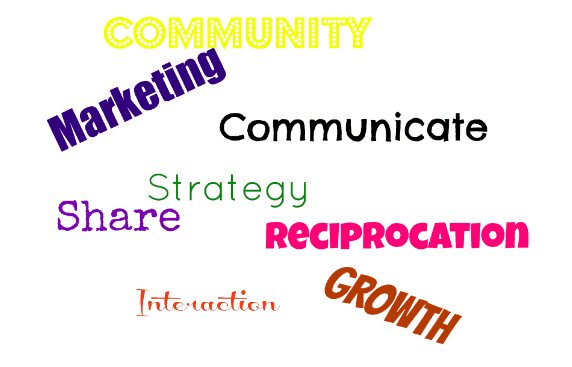How to Build a Community for Brand Loyalty and Online Engagement
Back before Facebook and Twitter, when social media was in its infancy, online community was an emerging trend and brands were just learning how to build a community to keep up with demand. Tired moms of newborns could sign on to a message board or drop into a chat room at midnight to talk to other moms of babies the same age. Business owners could seek out other entrepreneurs to ask questions about loans or equipment or share horror stories. Crafters could post photos of their latest projects and cake decorators could talk pricing. Strangers bonded over similarities and became friends. If you talk to some of those early adopters now, two decades later, many still converse with those they met back in the day. It was online community at its finest.
Fast-forward to now, where millions are online using various social media platforms. Things move fast and there’s a lot of competition for attention. There is so much information available, it is almost overwhelming. As a consumer, we’re bombarded with business information in addition to the personal things we follow. Because of the deluge of options, it’s harder and harder for businesses and brands to reach those they seek. We need to know how to build a community to work on, and grow, brand loyalty and online engagement is key. With Facebook being more of a pay-for-play platform than ever before, and tweets having a short half-life, we have to take different approaches to growing an online community.
With over 20 years of experience in the field, I’ve been witness to the evolution of community: what it is, why people seek it, what types there are, and how to make them successful. These changes change over time — sometimes daily — but with some basic information and quite a bit of patience, there are many ways to build a following for your brand, develop a strong brand loyalty following and increase online engagement, and you don’t have to break your budget to do it.
How to Build a Community for Brand Loyalty and Online Engagement
First you have to ask yourself or your team a few questions.
- Define community: what do you see it as? Be sure it’s in line with the rest of your team and your brand’s overall strategy. Generally, community is a two-way relationship where those involved communicate with each other, sharing stories, asking questions and providing support and answers. A community is not a brand standing at a podium, giving a speech, then walking away. It is a group coming together for one, or more, common purposes, like an online neighborhood. People have the choice to stay or go, so if you want them to stay, you’ll need to spend time working on it now and in the future.
- Know the purpose of your community: do you want to sell products and/or services? Do you want to get to know your customers better? Are you looking for feedback? Do you just want to provide a safe place for people to discuss your products/services or for those who buy from you to talk about their interests which they have in common?
- Have a target demographic: you can’t please everyone, so decide what demo you’re going to craft the community content around. You’ll still likely get other followers/readers who don’t fit it, so you’ll need to be ready to engage with everyone properly, but you can work to attract those who you most think are a good fit for your brand.
- Understand what your community wants from you: do they want answers about the product/service? Do they just want to chat with others who patronize your business? Their reasons for visiting your community may be the same as your purpose for your community, or they may be completely different. Never assume they will match.
- Where should you build your community? Most people build them on Facebook, but that doesn’t mean you have to. (I will say that I still feel every business does need a Facebook page though.) A community can be anywhere you have a presence, so don’t discount your Twitter followers who engage or those who regularly comment and Like on Instagram.
- What are you going to give your community, and how are you going to give it? Support? Answers to questions? Customer care? Discounts, deals, coupon codes, freebies, jokes, etc., the options are endless, but think about your approach. Too salesy will alienate people, and too many unrelated memes or off-topic shares from others’ pages will take the focus away from your brand.
- What do you expect from your community? It’s natural to want them to buy your product and/or service and to visit your website, but the bottom line is that you can have all the expectations you want; that doesn’t mean they will meet them. Be flexible and realistic. The more you engage them though, and the more valued they get from visiting your community, the more likely they are to hang around.
Using all that information, get started with your new community. Whether you do it yourself or hire a social media manager or agency, you’ll still need all these answers. It’s your community, even if you’re paying someone with specialized knowledge to run it. See who joins and what path it takes. Don’t be militant, as people aren’t going to know the rules initially, and you want the right people to hang around.
Speaking of rules, you will want to craft a set of guidelines. It doesn’t need to be fancy or long — in fact, the longer it is, the less people will read it. A good format is a bullet list of rules, such as “No vulgarity” or “Spam will be removed.” I always suggest clients include a guideline about disruption; disruption is intentionally taking the community/conversation of course, usually in a negative manner. That rule will help you in a lot of ways, as you can reference it if someone won’t stop posting negatively after you’ve handled it or if they name call someone or if they otherwise just ruin things.
On a similar topic, be careful what you remove. Removing vulgarity, spam and nastiness is a given, but I strongly recommend against removing negative feedback or questions. Transparency is going to give people a reason to hang around. They know they can trust you and they know they’ll get help if/when they need it. Keep people safe from attacks but allow people some leeway to discuss.
Keep an eye on the evolution of your community. Your initial answers may need to be fine-tuned; they are a good starting point, and may very well be successful, but sometimes you need to change things up to attract new people.
Pay attention to people. Nothing makes people leave more than to be ignored. They’ll forgive customer service issues and overlook confusion about a product problem, but if you don’t respond to them, they aren’t going to keep trying. They will not only leave your community but they’re also less likely to buy from you again. They need to feel heard and feel that they matter. Even if you can’t solve their problem, it’s uber-important to try and be sure they know that. So much of social media is perception, so others also need to see you are trying to help. If someone comes to a Facebook page and complains about a broken product and you’ve already helped them off of Facebook, you’ll still need to answer them again. Perception — people need to see you are trying to help them, even if the person isn’t stating the truth or is deliberately trying to malign you. (See above about disruption: sometimes you will want to use that clause to hide a post.)
If you have a team of people handling your community, be sure you’re all on the same page. You’ll want to have a unified approach. You can each be personal and unique, but with the same goal in mind. A style guide comes in handy, so you have a set of phrases or replies that you can use to craft a personalized response.
Always address their individual comment/question. Make sure your answer fits the question as well as offers them the proper condolences or apology that’s necessary. If someone says “I’m here to buy shoes for a funeral…” offer them condolences on their loss. If they’re buying shoes for a marathon, congratulate them for taking that on and show excitement for them. People remember these things!
Talk, talk, and talk some more! Be human. Post some giveaways. Convey positivity. Share resources and information that relates to the product/service/industry. Become an overall resource for your community. If you’re selling shoes, don’t deluge them with sales ads for shoes. Make 20-30% of your posts about your shoes — aka ads, boosted or paid — and let the rest be related content. One shoe company I know of shares foot health posts, a few fashion ideas on how to style their shoes and memes about hiding shoes from the husband. The community is thriving! When someone complains, they address it, take it offline if possible (you can ask them to email or direct message you, though DM’ing is typically easier) and learn from it.
We often look at customer complaints in the wrong way. Instead of sighing and getting annoyed, view it as a way to see if you can do something better next time. Not all complaints are unreasonable by any means. It’s never fun to hear our business demeaned but you can maybe prevent it from happening again if you take action based on the complaint, and for a bonus, let the community know it! Thank them, tell them what changes you’ve made, and welcome them to contribute further.
There are a lot of ways to encourage your community members to feel personally invested. Hold a shoe naming contest, ask them to submit photos of outfits worn with the shoes, let them answer each others’ questions. Acknowledge your regulars, knowing that they, your groupies, are likely to be brand evangelists offline, too. Keep your business and your brand at the forefront of their mind and their feed and it increases the chance you’re at the forefront of their shopping list.
In the end, realize people like to talk. Some like to complain. Give them a space to do that, a space where you can be involved. It’s so much better than them taking it somewhere that you can’t interject your reply or try to help. Be kind, be compassionate, be genuine and ask for their interaction and your brand will benefit tenfold.






